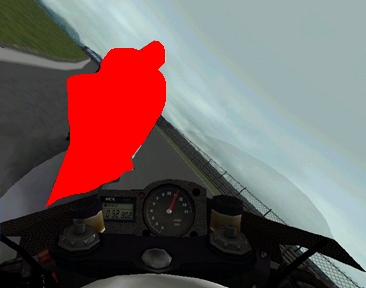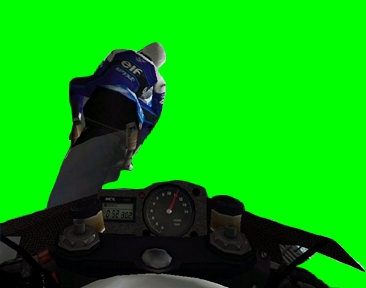| Hypercommunication - Crash Courses - Second-order Systems Theory [ Hyper-Library ] [ Hyper-Lexicon ] [ back ] |
|
|
|
1. |
There is a lot of theory - first in Gestalt psychology and then in computer-aided image processing - about which pixels together form an object or foreground, and why, and with which operations certain pixels are pulled together into a unit. One can - fuzzy - observe that the same colours, geometric figures, points moving together and the like are made into objects. There are many experiments in the teaching of shape perception that show that, for example, pixels that move together are interpreted as units. When a car passes by, all parts of the car move together, while all parts that do not belong to car do not move. As an interpretive observer, I see a car as a car, not as a set of masses of the same color moving together. There are also places where I consciously deal with the fact that I generally focus on objects in the foreground. For example, when a fly sits on the television screen, I don't look at the fly, but continue to watch the film. Or when I'm riding a motorbike, I'm not only and not primarily allowed to look at the rider in front of me, but I have to see the "background", because I almost instinctively go where I look. |


|
2. |
For my argumentation it seems to me to be irrelevant whether the focusing of attention is actually preceded by an overall perception. What matters to me here is that I ultimately perceive certain objects in their milieu, which requires a kind of attention. S. Ceccato beautifully illustrated that a chambera, unlike an observer, cannot say what is to be seen in the picture because it always sees everything, so to speak. I think that the technological aspect of his argument has been somewhat shaken by modern cameras with autofocus mechanisms, but I don't doubt that I use my attention in the way he described it - regardless of what cameras will ever be able to do. In this sense, I call attention a focusing projected into the receptive process, which I perform as an observer when naming the sides of a distinction. This attention determines what I observe of what I perceive, in particular which side of a distinction I see as marked space. |
3. |
Using tilt images you can play with foreground/background. But you have to keep in mind that the tilt images are the foreground in front of a - maybe empty - background. |
|
4. |
I do not perceive everything that I see, but also many things that I do not see. Whether I perceive something as "true" is not something I can decide with my senses. I use my senses to limit what I can take to be true. In this sense, scientific perceptual research does not examine how people perceive, but what the senses contribute to perception. This "perception" - which K. Holzkamp characterized as "sensual cognition" - was very often receptively understood, even where the great computing power of so-called image processing in the brain was recognized. Constructivists like S. Ceccato and J. Piaget lost their interest in receptive perception very quickly. With H. Maturana, one can follow the transition from perception experiments to epistemological questions very closely. In the meantime, there are also postmodern approaches in neurophysiology which regard perception as an actual action (see for example von Stein, A.: Die Rolle von Erwartung und Handlung bei der Wahrnehmung. Humboldt University Berlin Germany, June 28, 2001). |
5. |
Aristotle sees in truth an agreement of mind and matter: "True is to say of something that is to say it is, and of something that is not to say it is not. |
|
|
|